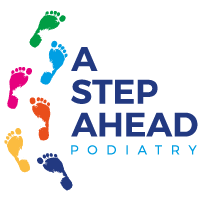What to look out for
If you’re strong enough to be sticking to those New Year’s resolutions about exercising, jogging and being healthy, then you’re doing a better job than me! But in all seriousness, if you got some brand new trainers over Winter to exercise in, you should be cautious about over using them and be aware of when they need changing.
Some people tend to keep wearing the same pair of shoes until they’re heavily damaged or dirty to the point of no return. Does this sound like you? Then you should probably rethink how often you replace your shoes. If you keep exercising (especially running) on worn-down soles, you’re increasing the risk of having an injury that could result in you paying a visit to a podiatrist.
When is a good time to change them?
A general guide is that you should change shoes about every 350 to 500 miles. For some people, this equates to buying a new pair every six months to a year. Although it might seem excessive, it can be a good idea to write down the date that you buy your shoes so you have a rough idea of when they’re approaching this threshold. Usually by the time you accrue this many miles, your trainers will show visible signs of wear, such as uneven soles, creasing, cracks, or rips in the fabric. As soon as your shoes appear damaged, replace them.
Own multiple pairs of shoes!
It should also be noted that it’s a good idea to have multiple pairs of shoes that you can alternate between throughout the week. It’s recommended that you don’t wear the same pair of shoes two days in a row, allowing them to fully dry out over a 24-hour period which results in reduced bacterial growth. This can help you avoid common podiatrist problems such as smelly feet, ingrown toenails, athlete’s foot and other feet issues.
Although you can check your shoes and keep track of their mileage for a good guide, above all else, listen to your body. If you consistently get aches, pains, shin splints and other injuries in your feet, it’s probably a good sign that you need new shoes. Still, it’s a good idea to visit a podiatrist if you have those issues to ensure that it’s nothing more serious than over used shoes.
What to keep in mind when buying new shoes
If you’re heading out to buy some new shoes, a good thing to keep in mind when purchasing is whether the shoes are fit for purpose. For example, if you’re generally jogging on pavement or track, your shoes will wear down faster than they would on a treadmill. If you end up having to invest a few extra quid into a pair of shoes that can withstand rugged conditions, it could save you money in the long run when you don’t have to replace them as quickly. If you’re not sure which style of shoe is best for you, we can give advice on the suitable type for your lifestyle.

